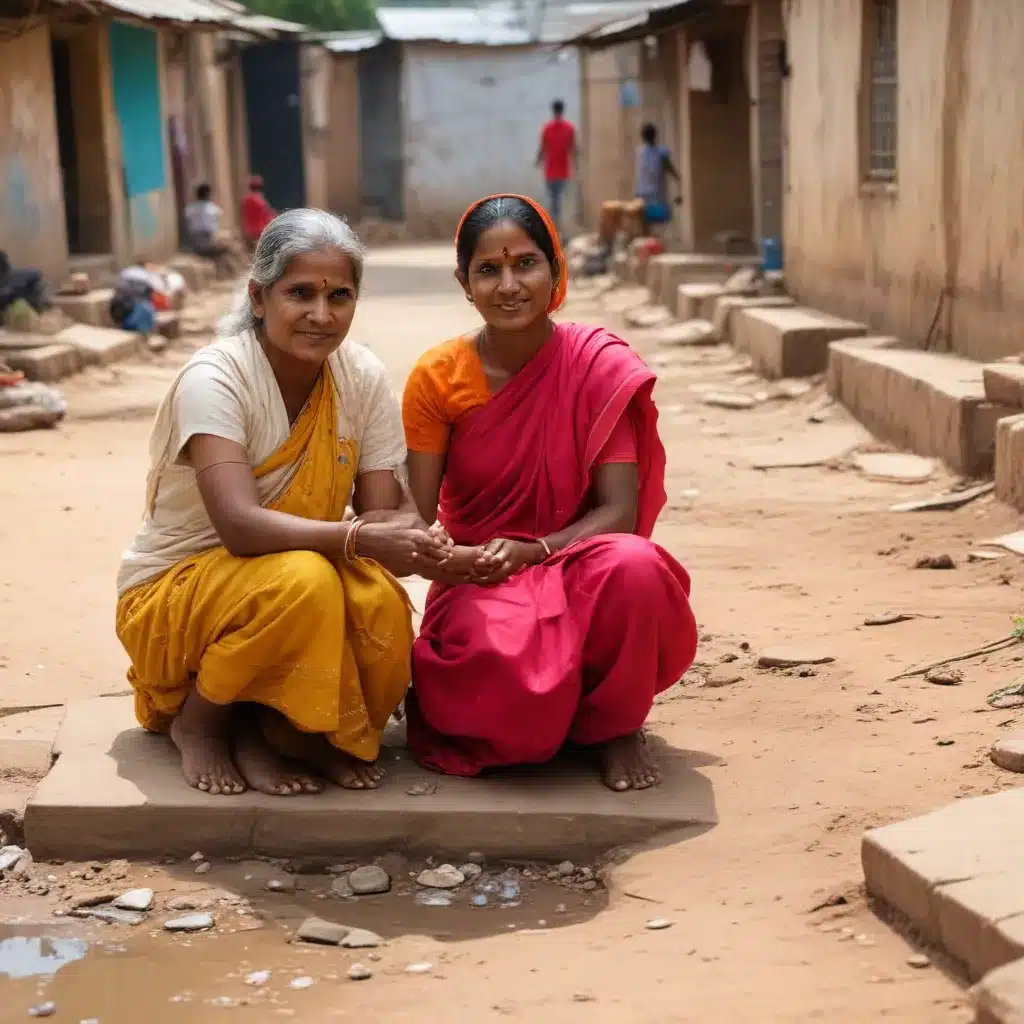
The Importance of Integrating Environmental and Mental Health Considerations
Our environment, both natural and built, plays a crucial role in shaping our health and wellbeing. Extensive research has established the positive influence of the natural environment, such as green spaces, biodiversity, and waterscapes, on the psychological health and overall quality of life of individuals. Similarly, the impact of the built environment and neighborhood characteristics, including urban design, community resources, and transportation systems, on the wellbeing and mental health of community dwellers has been well-documented.
This relationship between the environment and mental health is particularly salient for vulnerable populations, such as residents of urban slums, who often face a multitude of socioeconomic and environmental challenges. In Hyderabad, India, where a significant portion of the population resides in densely populated slum areas, the intersection of water, sanitation, and hygiene (WASH) issues with mental health and overall wellbeing is a pressing concern that requires a holistic, community-driven approach.
Leveraging the Natural Environment for Psychological Resilience
Numerous studies have demonstrated the restorative and stress-reducing effects of exposure to green spaces and waterscapes. These natural environments can have a direct positive impact on the mental health and wellbeing of individuals, helping to alleviate symptoms of depression, anxiety, and attentional fatigue. Moreover, the biophilia hypothesis suggests that humans have an innate emotional connection to other living organisms, which can lead to significant psycho-physiological benefits when interacting with nature.
In the context of Hyderabad’s slum communities, strategically incorporating green spaces, community gardens, and blue-green infrastructure can provide residents with much-needed respite from the often-overwhelming built environment. These natural elements can serve as havens for physical activity, social interaction, and mental restoration, ultimately enhancing the overall psychological resilience of the community.
Designing Inclusive and Supportive Built Environments
The built environment, including the design and characteristics of residential areas, public spaces, and community facilities, can also significantly impact the mental health and wellbeing of slum residents. Factors such as overcrowding, poor housing conditions, lack of access to basic services, and inadequate transportation systems can contribute to increased levels of stress, anxiety, and social isolation.
To address these challenges, urban planners and policymakers must adopt a holistic, community-driven approach to shaping the built environment in Hyderabad’s slum communities. This may involve:
-
Improving WASH Infrastructure: Ensuring reliable access to clean water, adequate sanitation facilities, and effective waste management systems can not only improve physical health but also positively impact mental wellbeing by reducing the burden of disease and improving overall living conditions.
-
Enhancing Community Spaces: Designing inclusive, multifunctional public spaces that cater to the diverse needs of residents, such as recreational areas, community centers, and cultural hubs, can foster social cohesion, promote physical activity, and provide opportunities for mental respite.
-
Promoting Accessibility and Mobility: Improving the accessibility and connectivity of slum communities through well-designed transportation networks, pedestrian-friendly infrastructure, and last-mile connectivity can enhance residents’ access to essential services, employment opportunities, and social support, all of which contribute to improved mental health outcomes.
-
Incorporating Trauma-Informed Approaches: Recognizing the high prevalence of trauma and adverse experiences among slum residents, integrating trauma-informed design principles into the built environment can help create safe, empowering, and healing spaces that support the mental wellbeing of the community.
Strengthening Community Engagement and Advocacy
Addressing the intersection of WASH, mental health, and overall wellbeing in Hyderabad’s slum communities requires a collaborative, community-driven approach that empowers residents to participate in the decision-making process and advocate for their needs.
By fostering meaningful engagement with slum communities, policymakers and urban planners can gain a deeper understanding of the unique challenges and aspirations of residents. This, in turn, can inform the development of context-specific, evidence-based solutions that integrate environmental and mental health considerations, ensuring that interventions are responsive to the community’s needs and priorities.
Moreover, building the capacity of slum residents to advocate for their rights and mobilize collective action can amplify their voices and facilitate the co-creation of inclusive, sustainable, and mentally restorative urban environments. This approach not only addresses the immediate concerns of the community but also lays the foundation for long-term, systemic change.
Bridging the Knowledge Gap through Collaborative Research
Despite the growing recognition of the importance of integrating environmental and mental health considerations in urban planning and policy development, there remains a significant knowledge gap, particularly in the context of low- and middle-income countries like India.
To address this challenge, it is crucial to invest in collaborative research that brings together diverse stakeholders, including urban planners, mental health professionals, public health experts, and community representatives. By adopting robust, interdisciplinary methodologies, researchers can generate evidence-based insights that inform the design and implementation of holistic, community-centered interventions.
Furthermore, the development of contextualized measurement tools and evaluation frameworks can help capture the multifaceted impacts of environmental interventions on the mental health and overall wellbeing of slum residents. This, in turn, can inform evidence-based policymaking and guide the replication and scaling of successful models across Hyderabad and other urban centers in India.
Conclusion: A Holistic Approach for Thriving Communities
Addressing the intersection of WASH, mental health, and wellbeing in Hyderabad’s slum communities requires a comprehensive, integrated approach that leverages the power of the natural and built environment to promote the overall health and resilience of residents.
By prioritizing the integration of environmental and mental health considerations in urban planning and policymaking, investing in community-driven initiatives, and bridging the knowledge gap through collaborative research, we can work towards creating thriving, inclusive, and mentally restorative urban environments that empower Hyderabad’s slum residents to live with dignity and fulfill their full potential.

